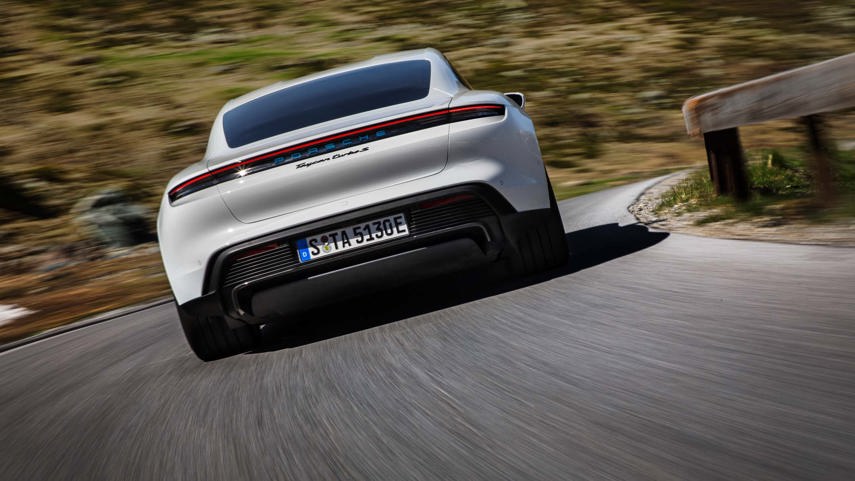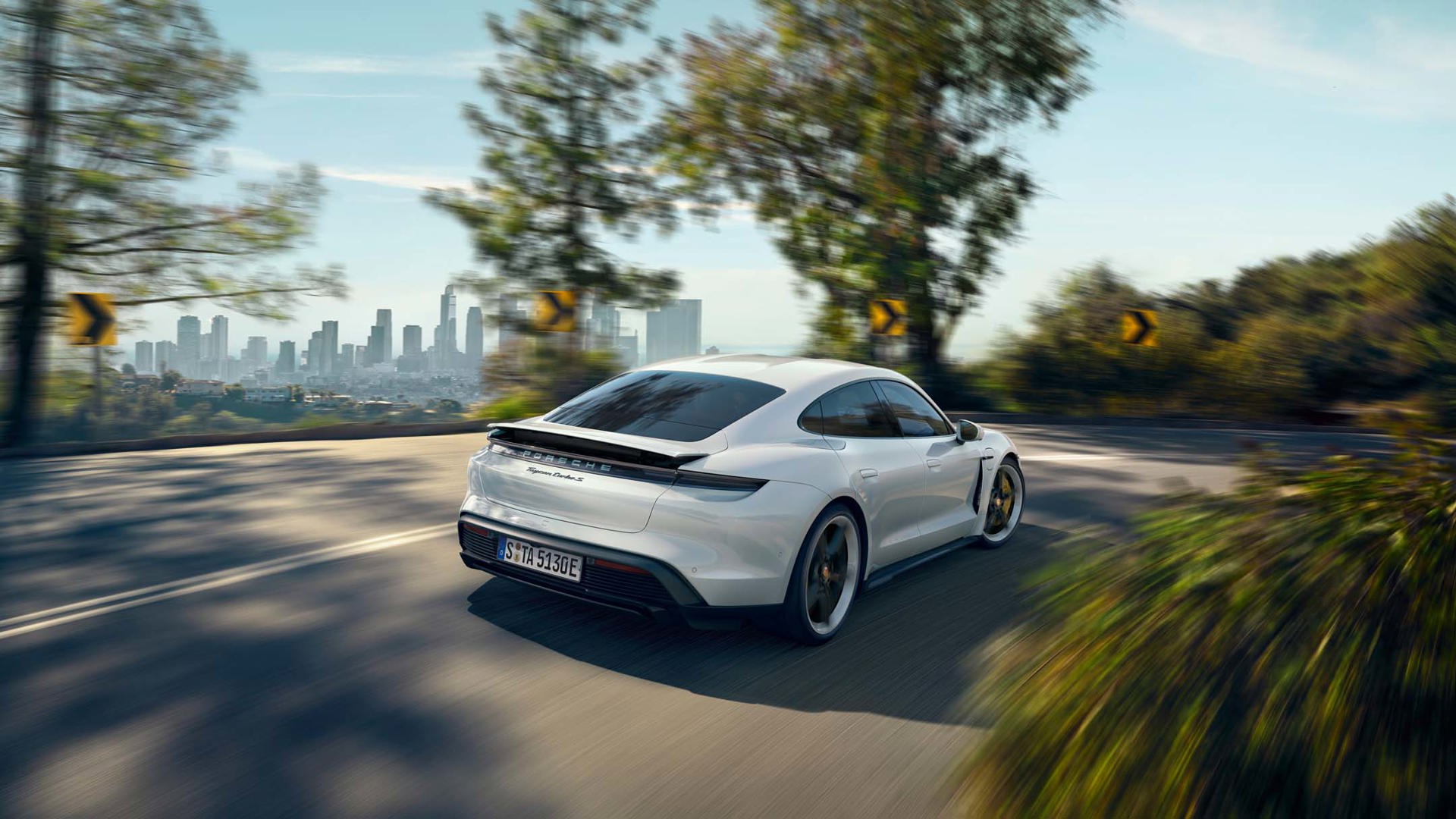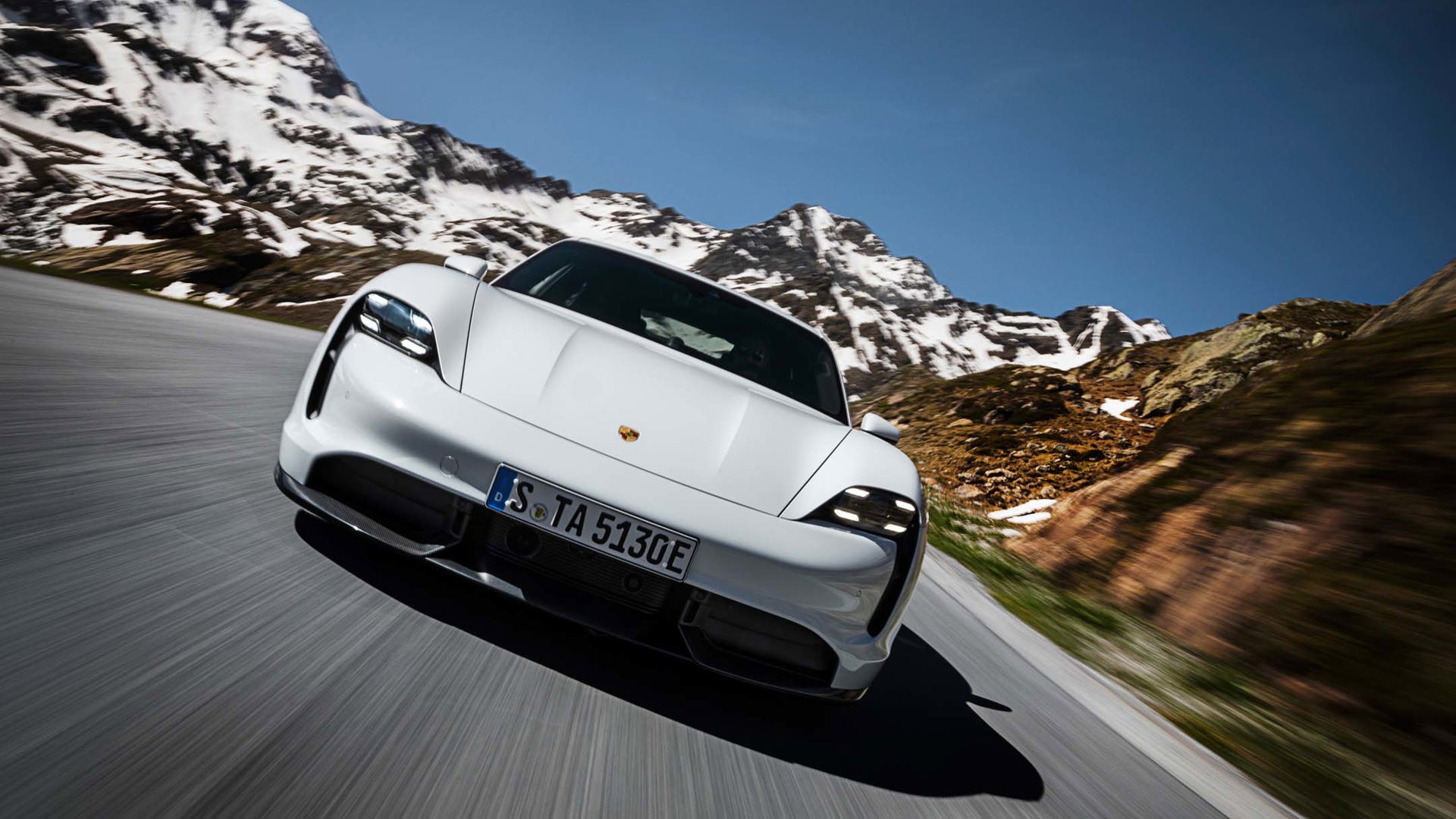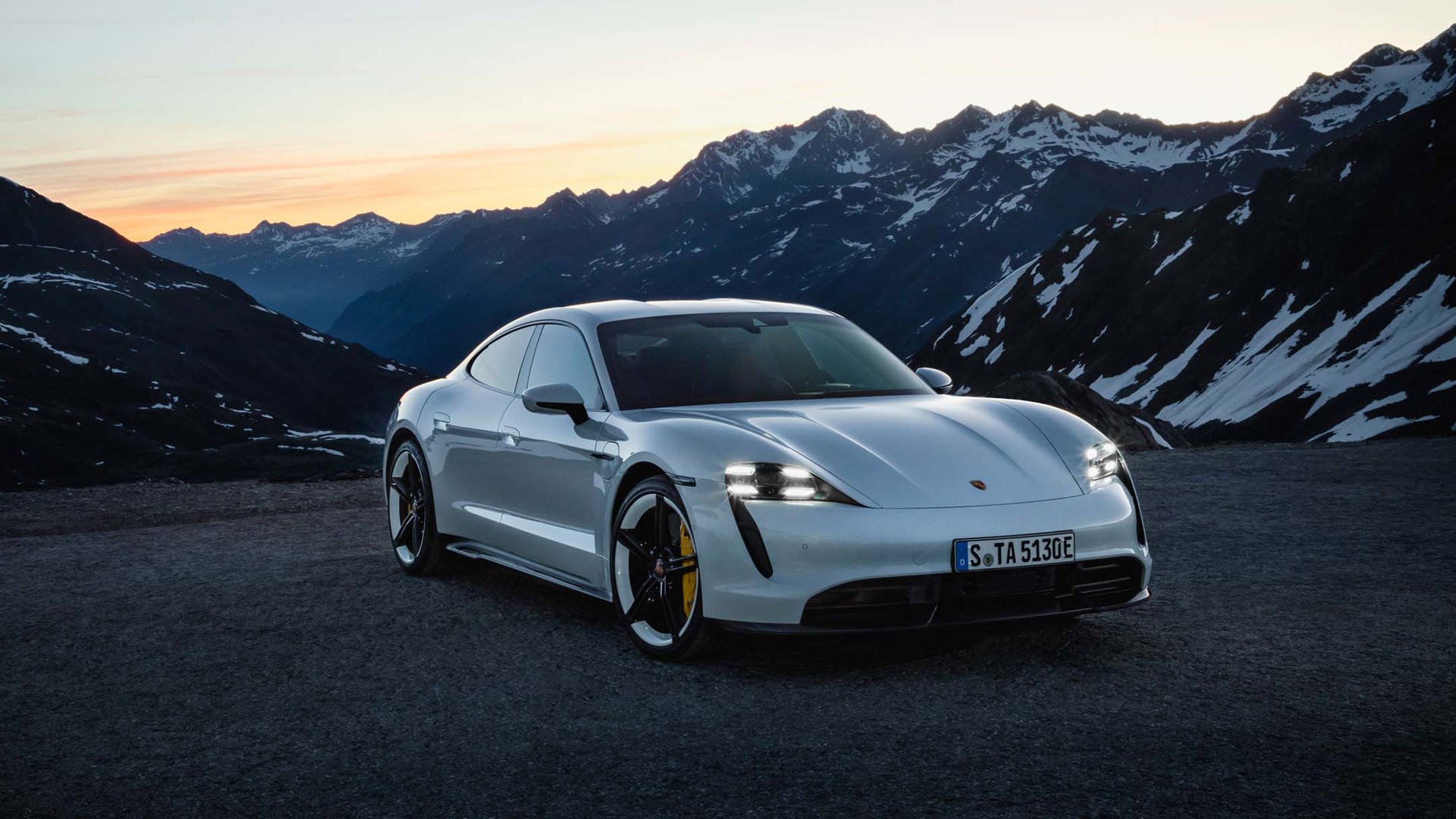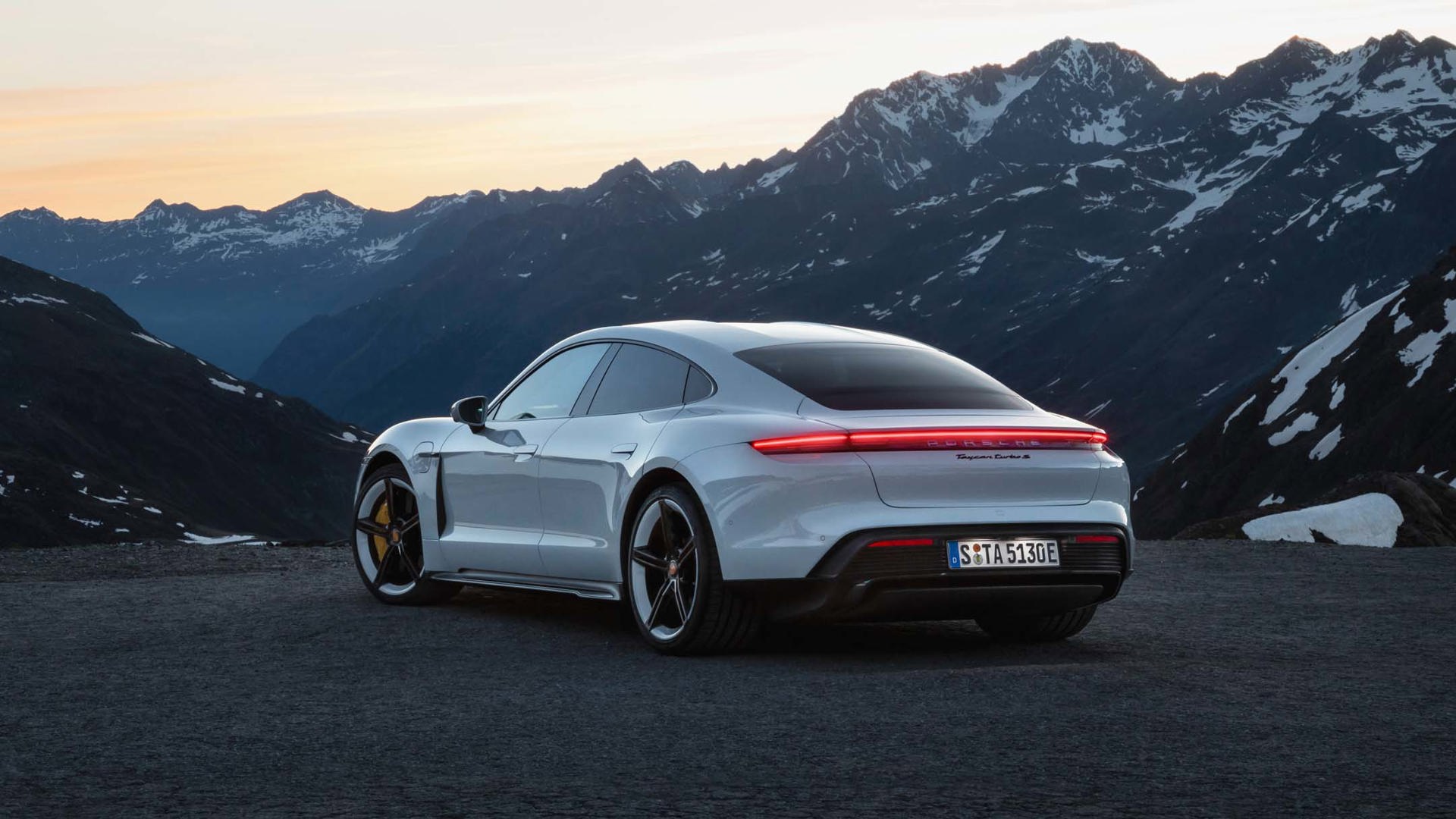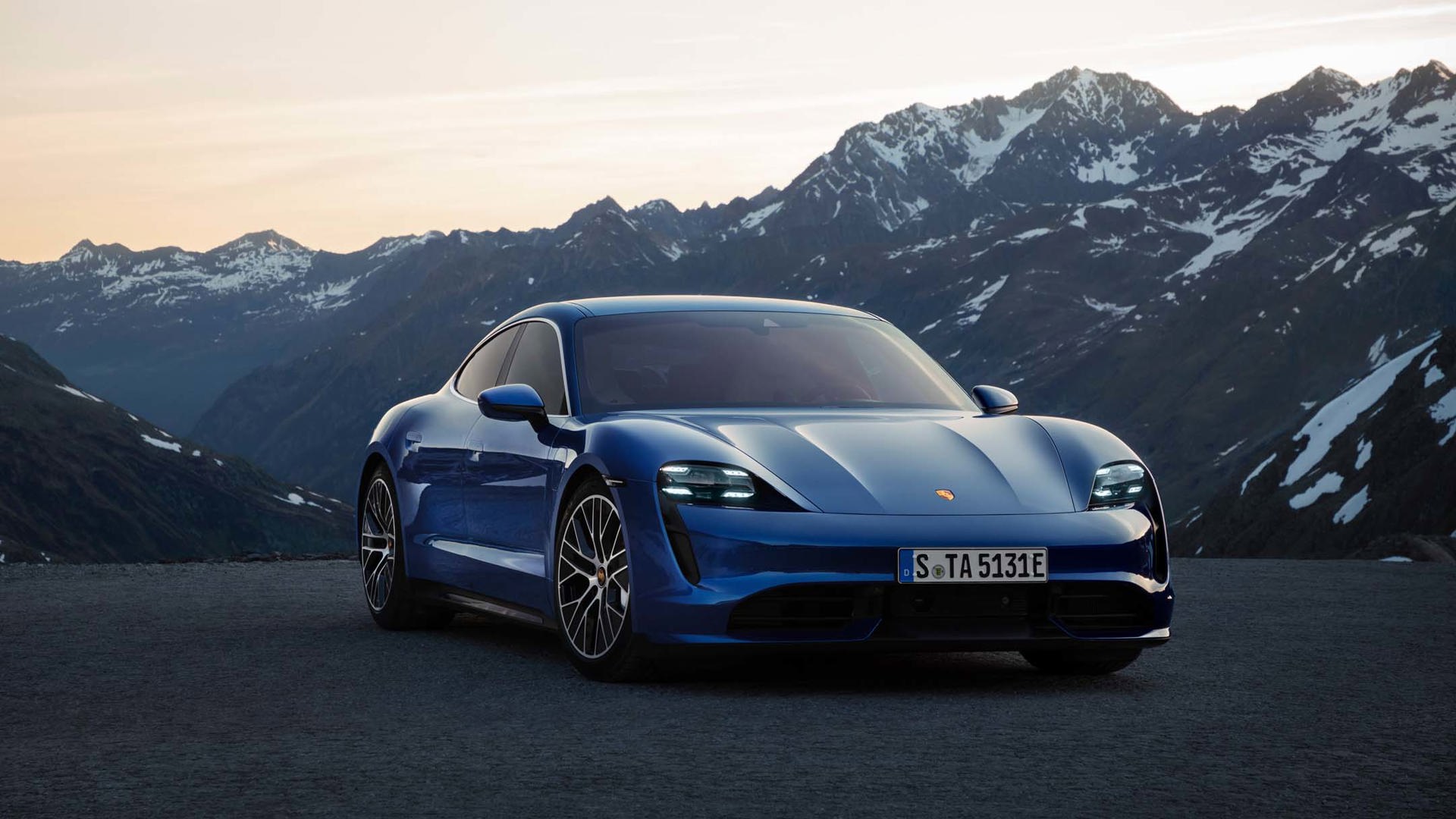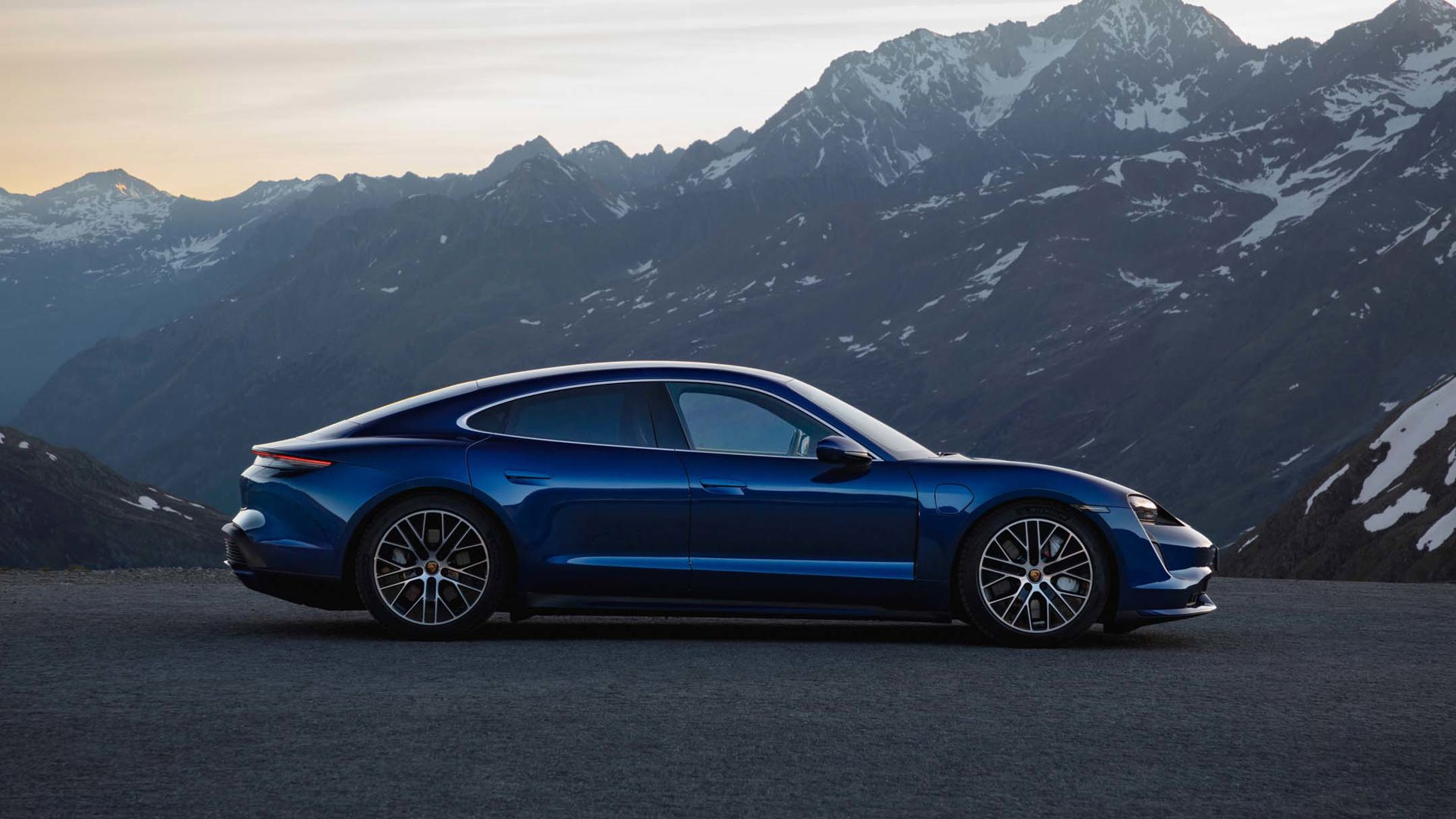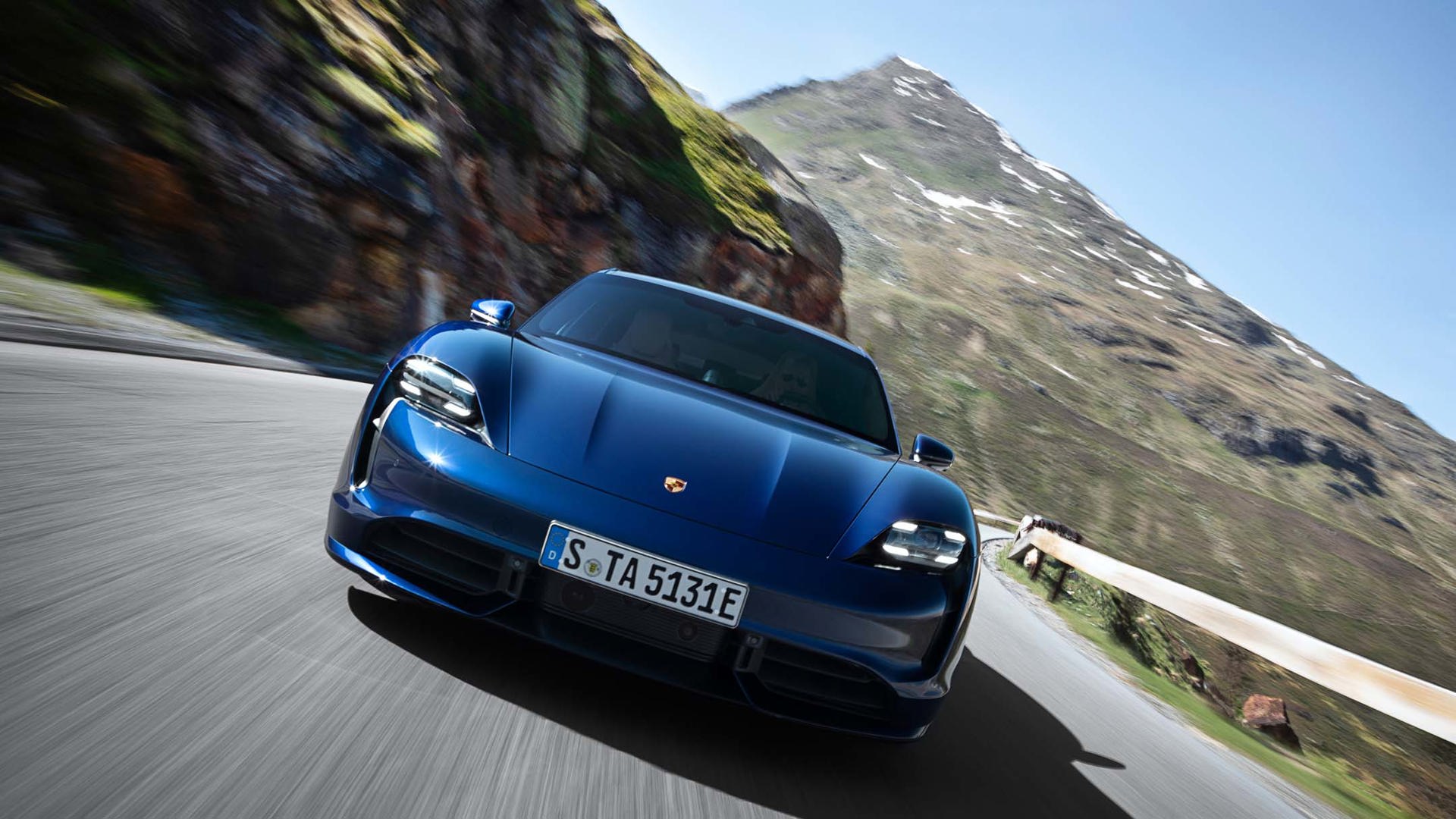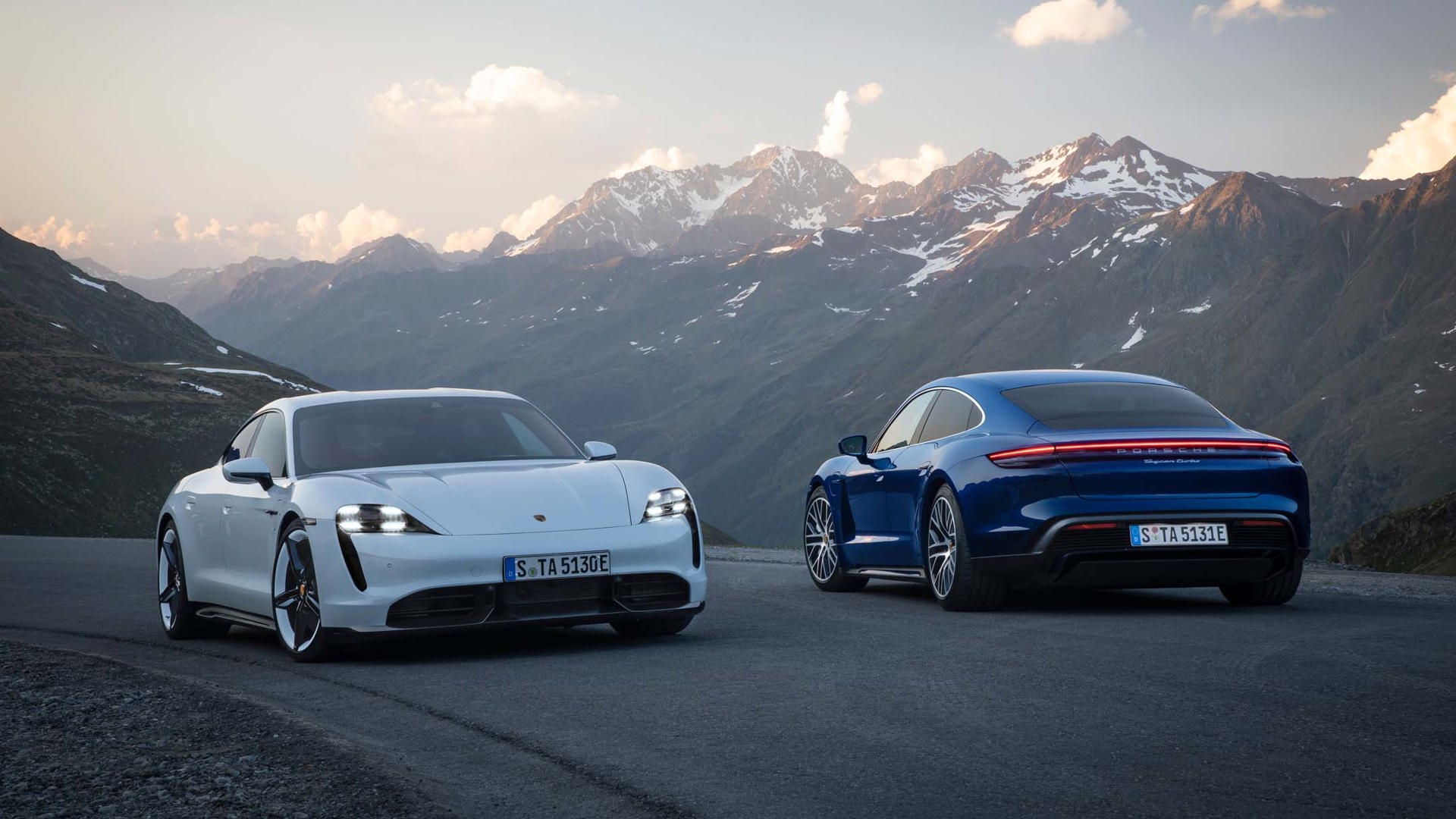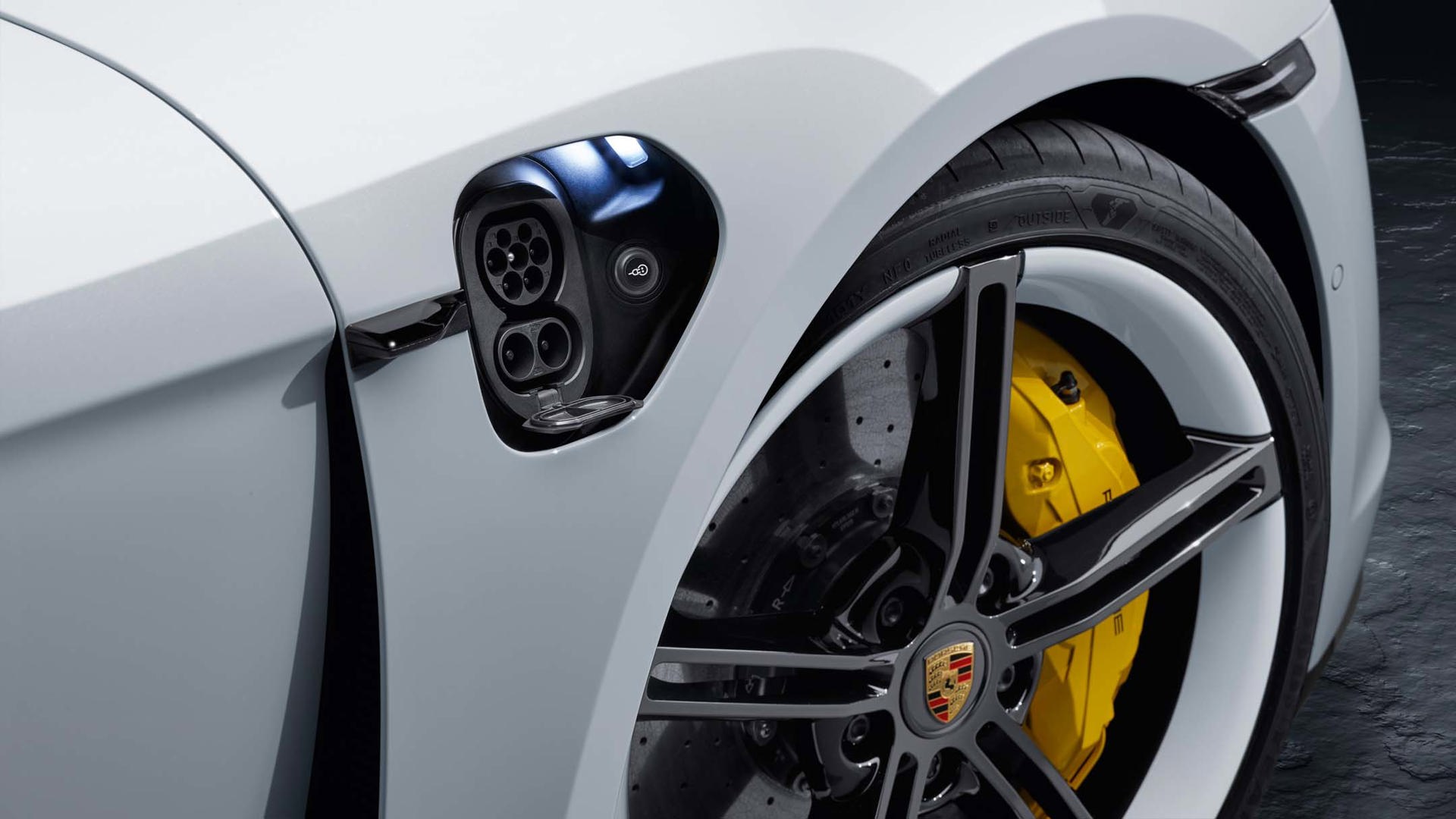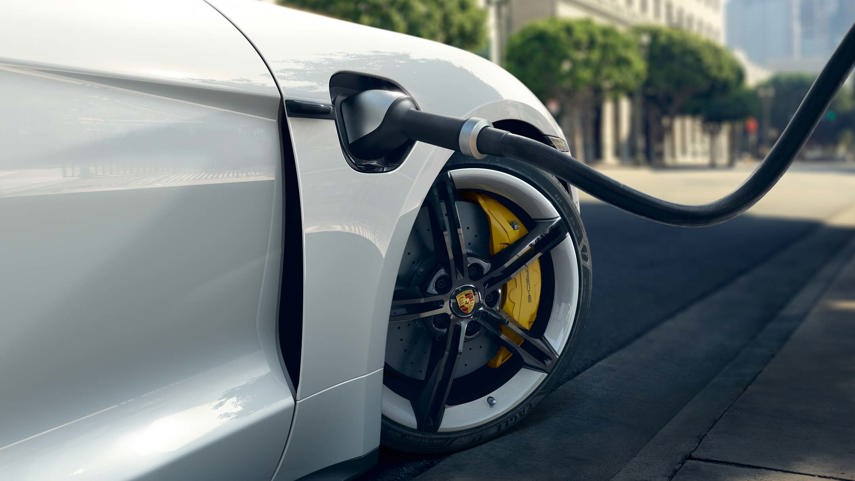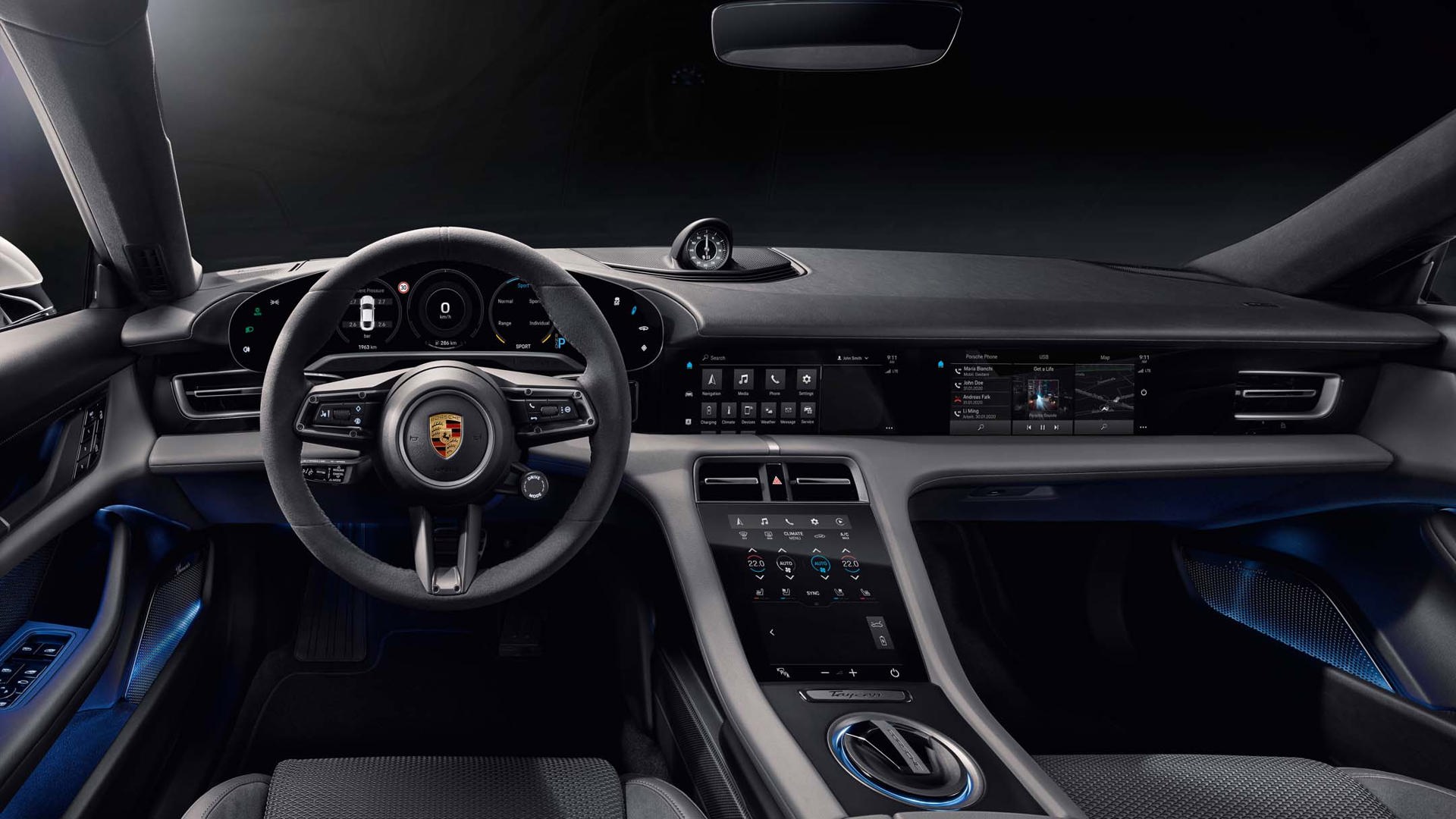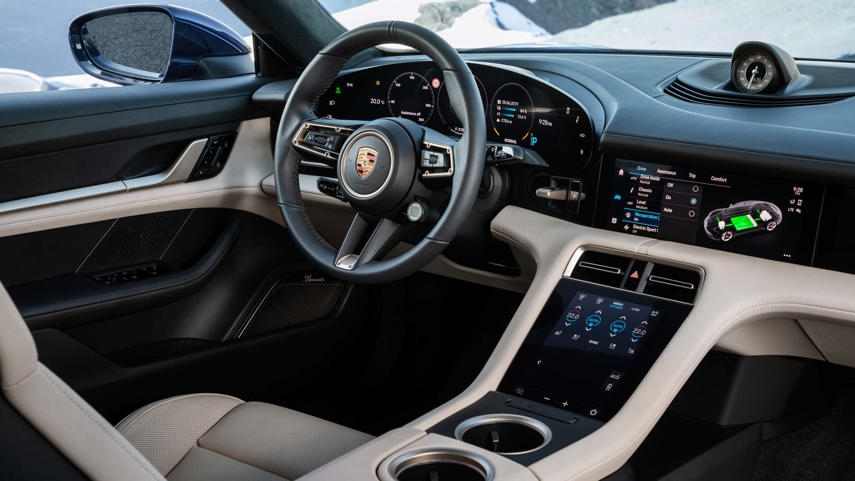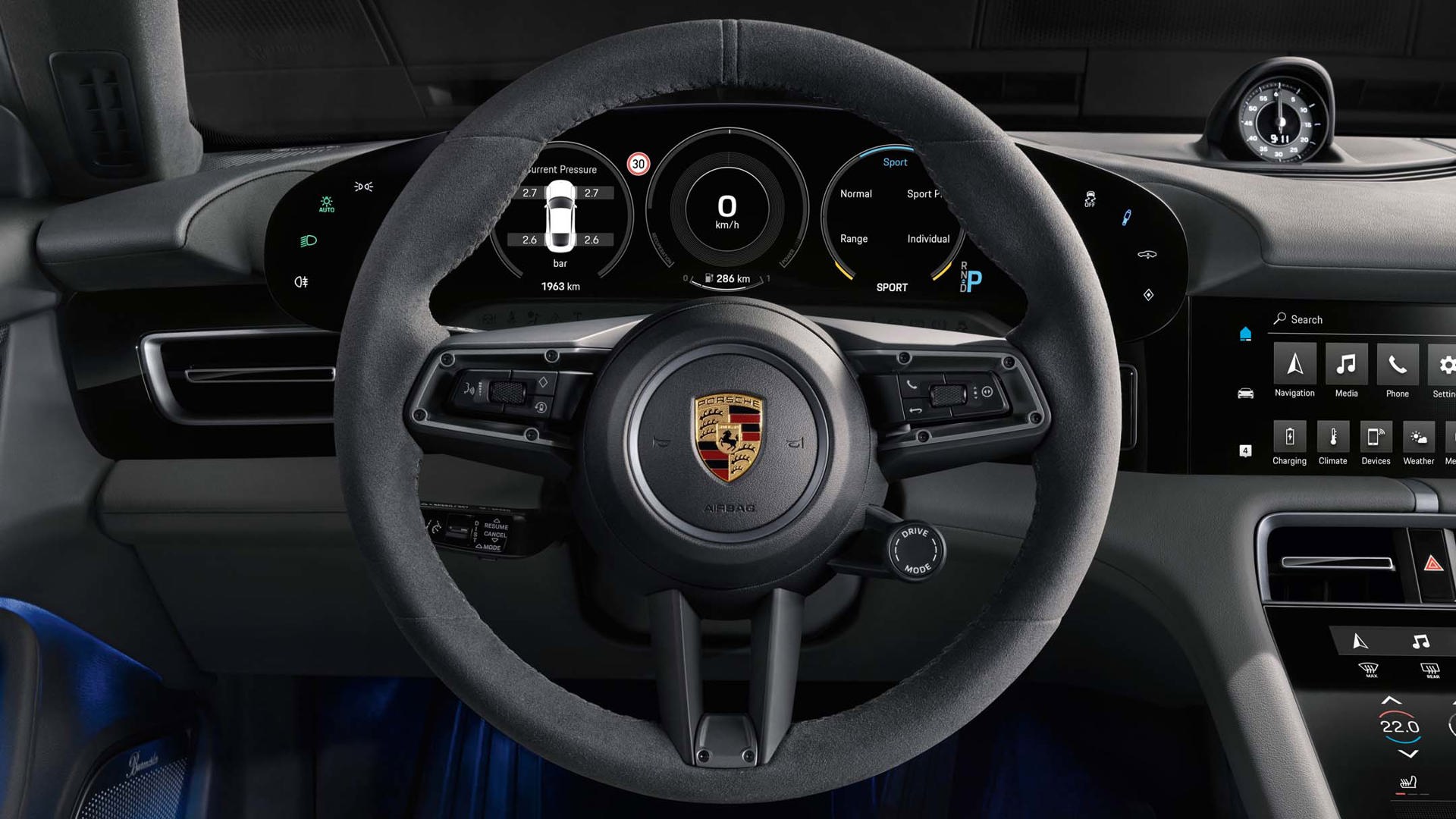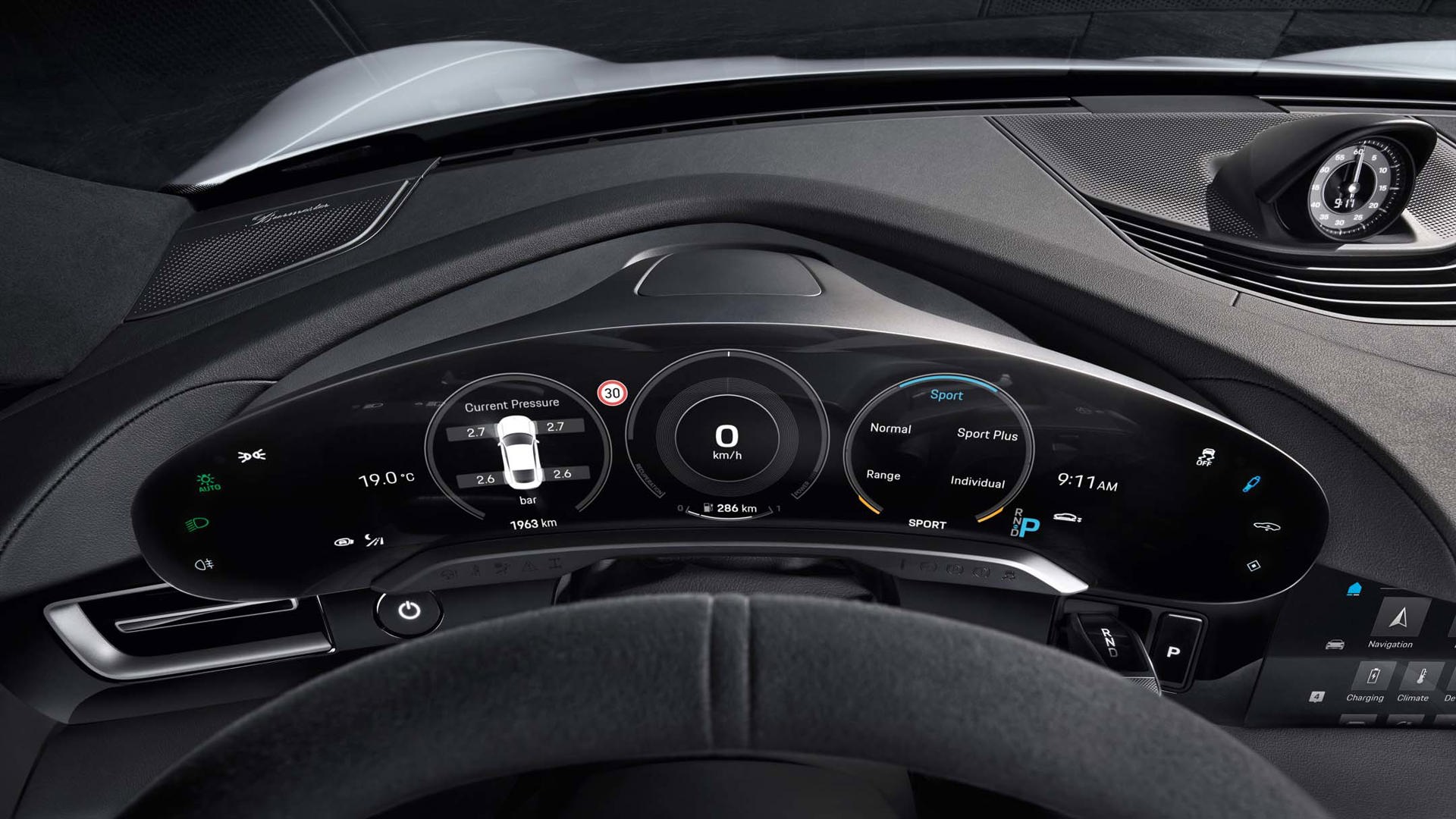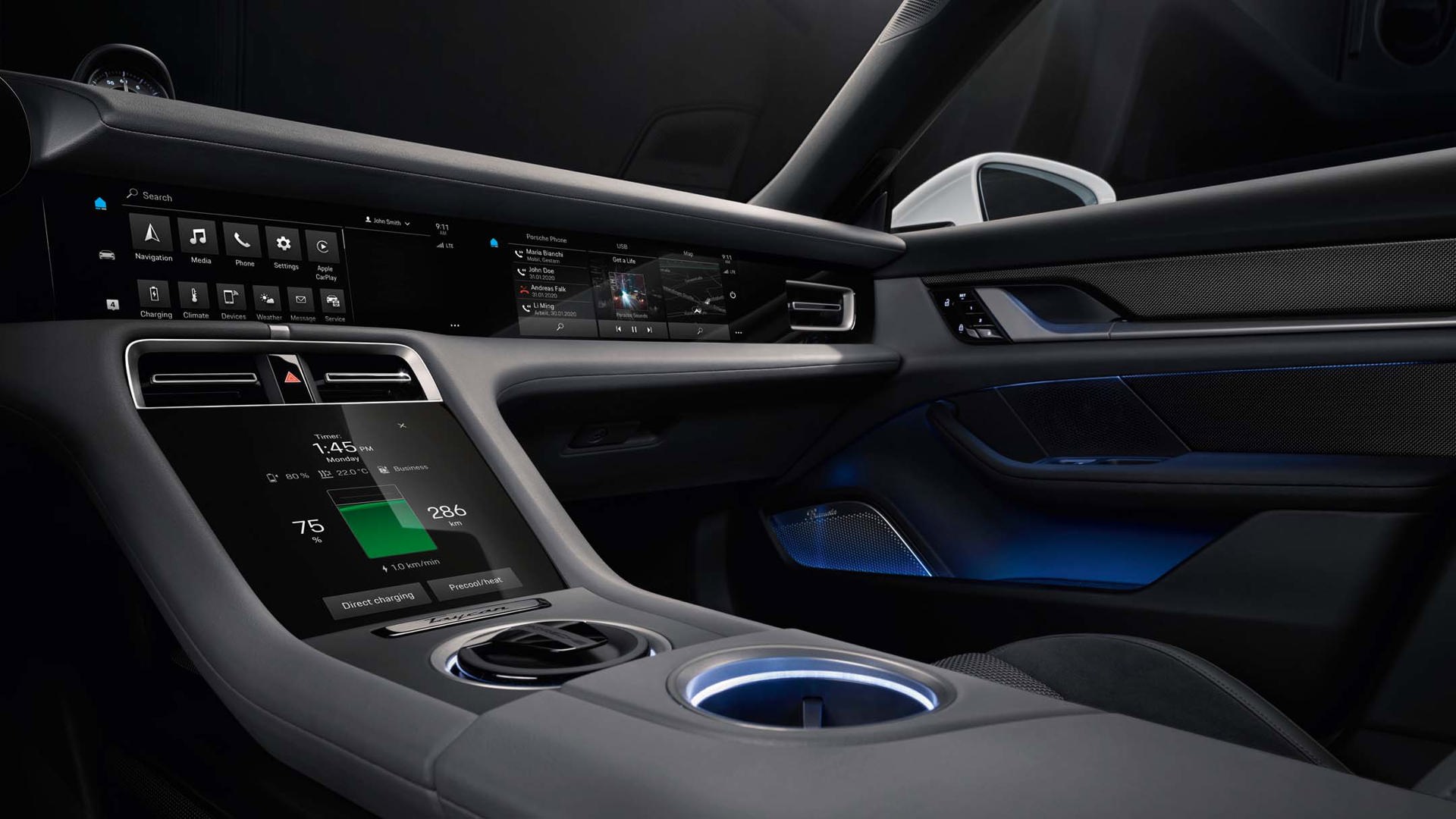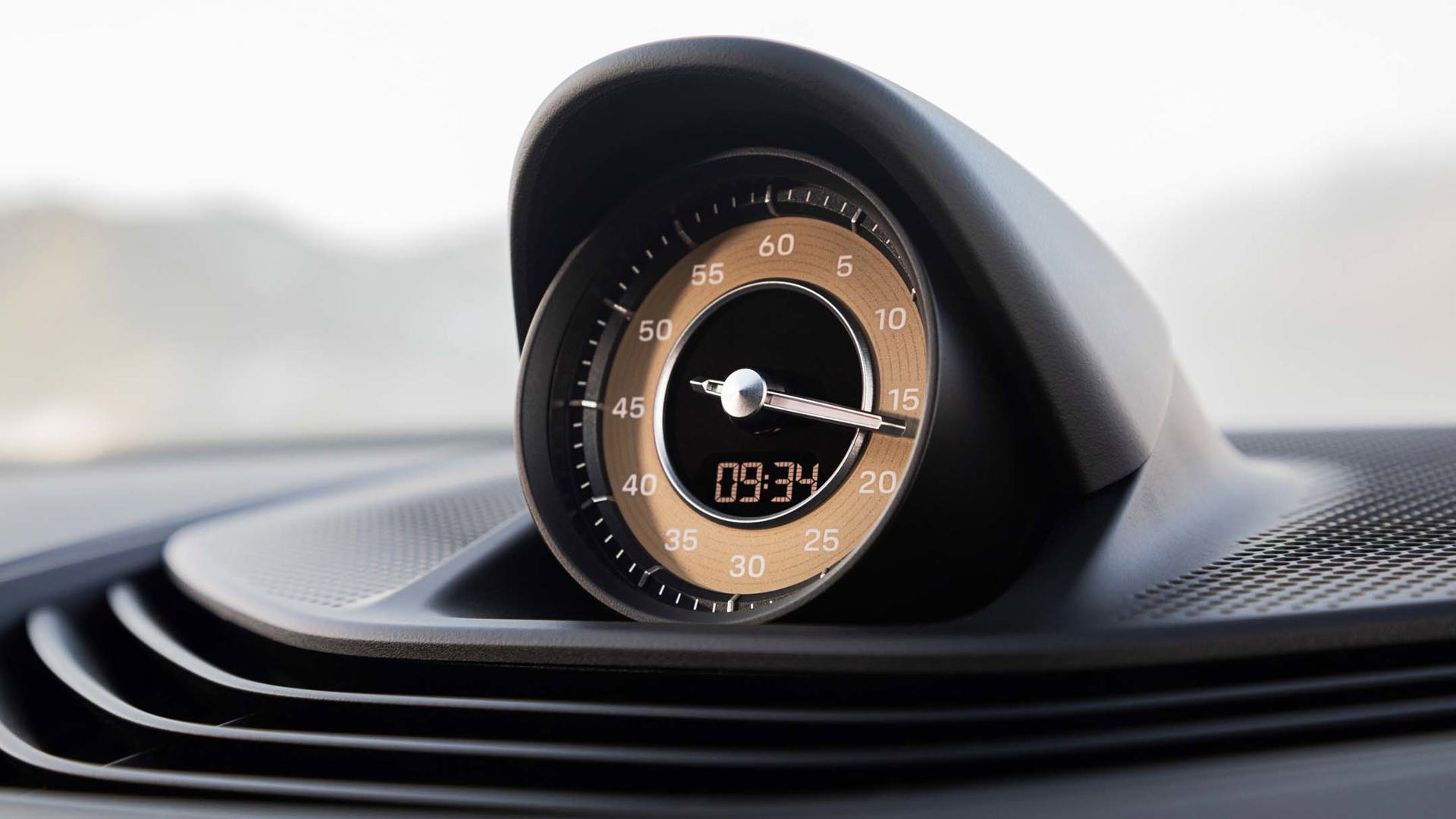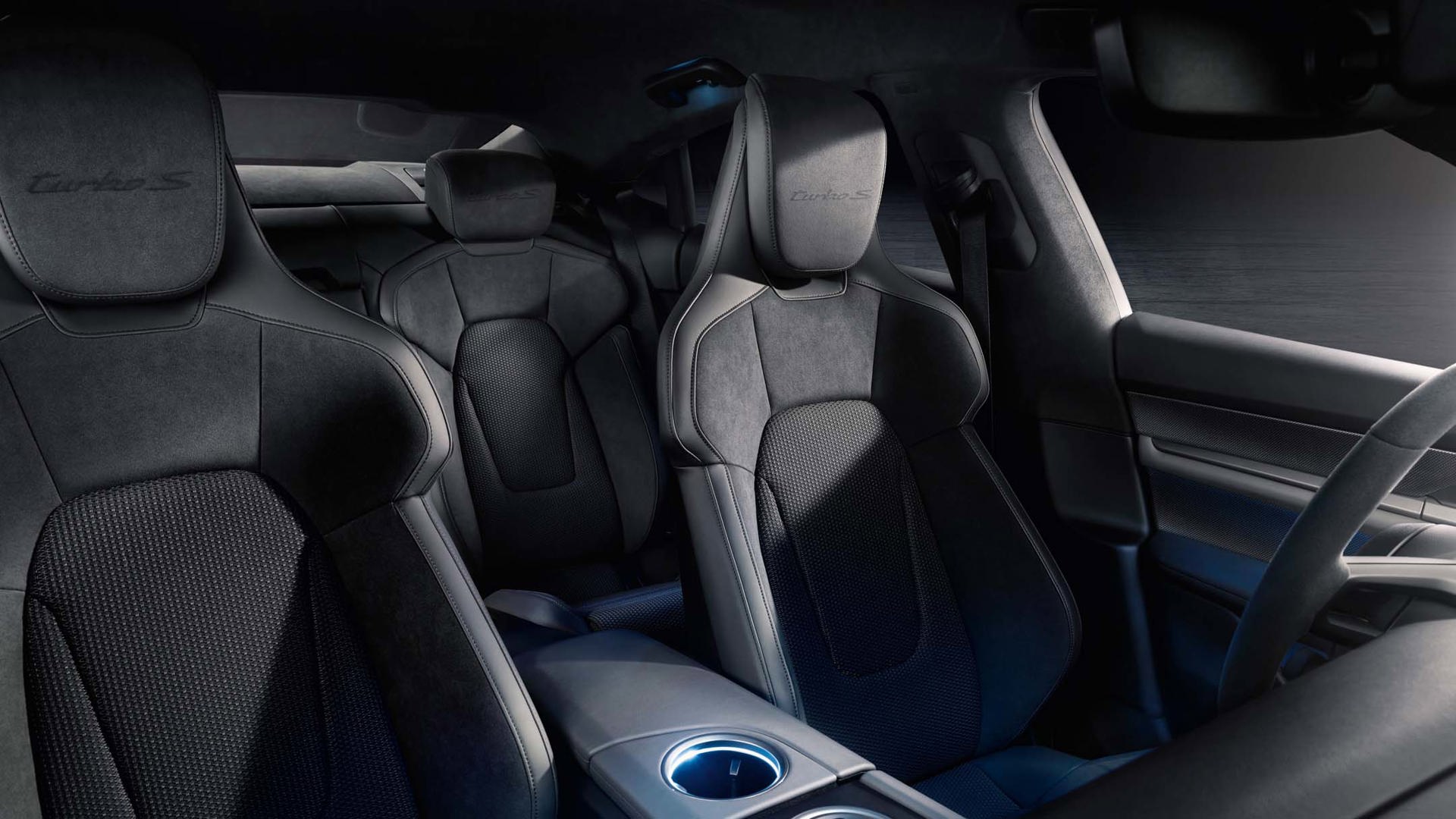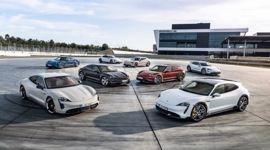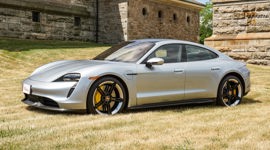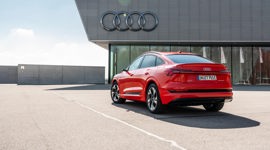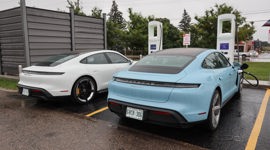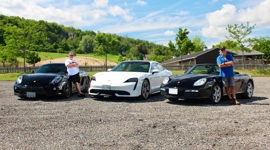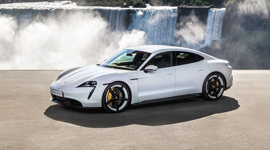Porsche has just revealed its first fully electric car through a series of simultaneous events at locations around the world. It's the first time we get to see the car in the metal. But a few weeks before today's events, Porsche let us see under the skin of the new Taycan EV. Not just the interior, which we brought you a few weeks back, but a glimpse at how the car is built, what will power it, and how Porsche thinks you'll charge with it. Then they took us for rides. Really fast ones. So here's your look at the tech-ing of Taycan.
Range is 450 km. It's the number everybody wants to know. That's the WLTP-rated electric range that the Taycan has managed. Using a 93 kWh lithium-ion battery located under the floor in a cage that's part of the car's safety structure.
What is Porsche doing with all that juice? How about 750 hp. That's what the Taycan Turbo S can manage on the short-term overboost function its powertrain allows. Normal max power for the S is 616 hp. That's actually the same max power figure as the standard Turbo, but the Turbo is limited to 670 hp on overboost. The Turbo boasts 626 lb-ft of torque, and the Turbo S has 774. Yes, they're calling them Turbo and Turbo S. We'll leave it at that.
That means 0-100 km/h in 2.8 seconds for the S (vs 3.2). And a 10.8-second quarter mile (11.1 for non-S). These cars are extremely quick. That 450 km range is for the Turbo. The Turbo S gets 21-inch wheels instead of 20-inch, so it gets more like 412 km.
The Taycan will use two electric motors, one for each axle, so therefore all-wheel drive. And each gets its own inverter, mounted directly to the motor. The Turbo S has a more powerful 600A inverter up front, 300A for the rear. Both use the same 600A unit in the rear, and Porsche says the inverter is 98.5-percent efficient. While the front motor's planetary gearbox uses just a single drive ratio, the back axle gets two speeds.
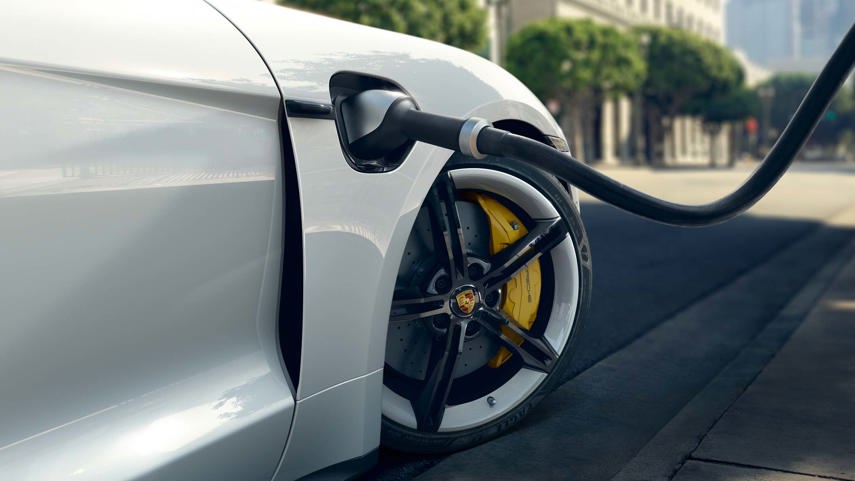
A 16:1 ratio offers more torque on launch, allowing quicker acceleration. Then, at speeds that vary from zero to about 100 km/h, and also change based on battery state, it shifts to a high gear that's the same 8.05:1 ratio as the front axle. Using two gears in the back nearly doubles torque output at the wheels. There's a maximum of just under 12,000 Nm, flat to about 50 km/h before starting to curve off, according to the graph we were shown.
The car won't always use the low gear, and in fact, will use high as much as possible. The shift speed between the two is "in range of the fastest DSG" Porsche says. It could be faster, but the massive change in RPM from the gap in ratios (imagine shifting hard from first to sixth in a normal car) makes the somewhat slower shift necessary.
The electric motors are permanent magnet synchronous motors. Instead of using electricity to make the magnetic field that makes motors work, there are just some magnets. Porsche says they're smaller than a brushless DC motor. And easier to cool because there's less heat in the centre. Porsche is also using hairpin wiring. Square wire instead of round. They say it means that there is 70 percent copper in the windings instead of more like 45 percent with round. That means more power, easier insulation of the wires means better cooling as well.
Of course, delivering all of this power takes lots of electrical work. Porsche's new electrical system operates on 800V. That means that the automaker can use thinner, lighter wires than 400V systems. Double voltage, halve the current. It also allows 270kW charging. That's the fastest charging around right now. Tesla's V3 Supercharging can handle up to 250 kW for brief periods on certain stations, though most of their network offers a max of 145kW. Porsche says that they anticipate 500kW charging in the near future, and that the current (pun intended) rate is limited by the battery.
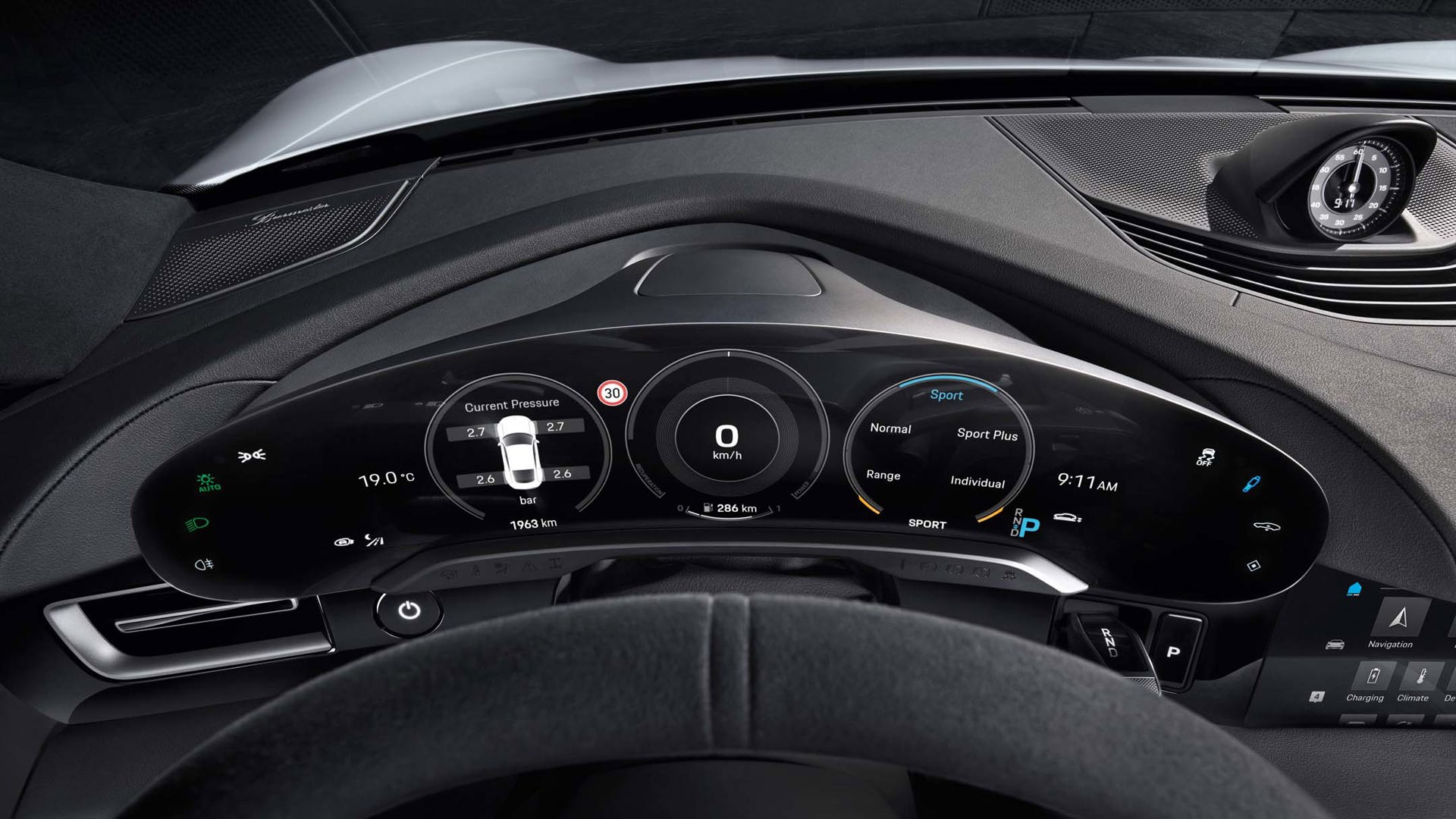
The charge speed peaks at around 45 percent charged, then drops to around half of the 270 by 80 percent full. Porsche says that all of today's batteries see a similar curve and limitation. Preconditioning, or making sure the battery is at an optimal temperature, also plays a big part in charge speed. Plug it in at 0°C with preconditioning, a 5-80 percent charge takes 22.5 minutes. Plug it in without getting it ready, and you're looking at 40-45. Tell the nav where you're planning to charge and it'll handle all that without you knowing.
Charge at home or at a Level 2 station, and the Taycan can charge at 9.6kW. Porsche figures that's how 80-90 percent of charging will be done and says it'll take between nine and 11 hours if you roll in on your last few electrons. There's a standard 400V 50Kw charger and a 150kW version is optional. All cars are still capable of 270 kW at an Electrify Canada (or Electrify America) fast-charger, which Porsche figures will be just a few percent of real-world charges. The Taycan will have the usual array of charging statistics and settings accessed through an app including billing summaries and time of day charge options. There will also be an available home energy manager. Hook it into your home electrical system and it will monitor whole-home loads. Like the dryer and stove. Then throttle charging as necessary to make sure you're not left in the dark.
All Taycans will have two charge ports. AC is on the driver's side in all markets, and DC goes on the passenger side. The former to make it easier to plug in inside your garage, the latter for roadside chargers. Like how German cars put the fuel filler on that side.
Standard on Turbo S and optional on the base is a fancy charge door, too. Instead of sticking out like a normal flap, this gesture-controlled door slides up into the fender. Worried about ice? It can vibrate back and forth, tested to crack 1cm of ice at -40C.
Taycan can also regenerate at a very high rate. Up to 265 kWh. Porsche says most others are at a rate more like 100 kWh. This means 90 percent of braking is done through regen. That means that pads on the steel or optional carbon-ceramic (10 piston front, 4 rear for both) brakes should last forever. Porsche says to swap them every six years, though, for safety. There's also no one-pedal driving here. Porsche says that using the brake pedal to brake is more efficient, more intuitive, and easier on passenger necks. It also allows for more consistent braking. EV and hybrid drivers likely know the first-stop terror of the full and cold battery where there is no regen to be found when you lift off the accelerator. The Porsche computer will make sure that the pedal always feels the same, no matter the state of charge, while using regen over friction as much as possible. The system can also be set to coast or even automatically slow the car using regeneration and a camera in the nose that watches the cars in front.
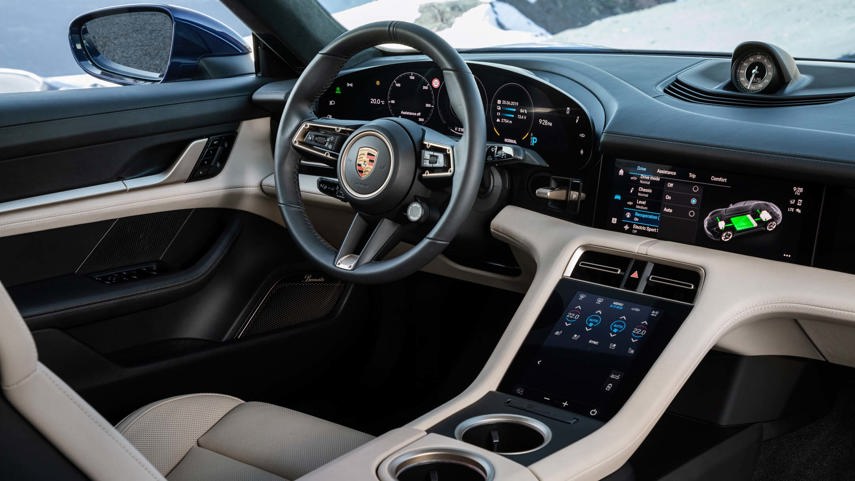
The structure of the car is 37 percent aluminum, including most of the body. The pillars and the floor are steel, with the floor steel to better isolate noise. 3,139 spot welds and 714 flow drill screws - a fancy spot weld - make it stiff. As does the 150 kg aluminum battery cage that is held in with 28 bolts and is part of the crash structure. Keeping impact forces from crushing the 630 kg battery pack. Porsche says they did up to 2.5x more crash simulations on this vehicle than the Panamera.
Speaking of sound isolation, a big part of the Porsche package is sound. Especially the flat-six models. But what do you do when the car is electric? Electronic Sport Sound on the options list. No, it's not a fake engine noise. Porsche is, instead, embracing the EV whir. The sound of the electric motors is amplified and modulated to lower frequencies. To give it a bit more of an engaging sound while acknowledging there's no combustion here.
Finally, the chassis. The suspension is largely borrowed from the Panamera, though this car's smaller. That means parts sharing like control arms. The lower hood line, though, requires different struts. They're three-chamber air suspension units with a pressure tank for quicker response. Able to drop 22 mm for better handling or for longer highway range. And able to climb 20 mm when more height is needed.
New traction control systems installed in with the motor controllers means it can control traction more quickly. And Porsche Torque Vectoring+ can shift up to 1,500 Nm of torque between the rear wheels. There is an electronically controlled clutch-operated limited-slip differential. Even dynamic damping. Plus an active roll control system that uses a 48-volt architecture. It can keep the car virtually flat at maximum cornering force and also make the ride softer on single-wheel bumps.
So, what's it like to ride in? The answer is, unsurprisingly, fast. Really fast. Expletives I can't use in good company fast. Forget just the launch, sub-three-second 0-100 km/h runs are nothing new for an EV, though they need to be felt to realize just how visceral the speed is. It makes a Hellcat feel like a Corolla, but without the noise.
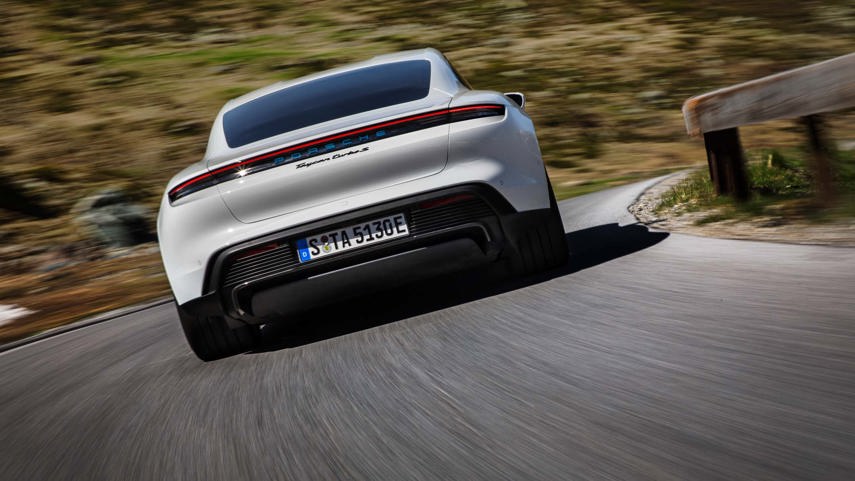
It's just as quick on track. Porsche took us each for a 5-10 minute ride around the track at the company's experience center. In Atlanta. So it was 34°C with a humidex of around 46. Hot. Extremely hot. And Porsche had only four camouflaged cars. With more than 50 journalists present. So the four cars were going out over and over again on the high-speed laps with the AC cranked. With no loss of performance, the company said.
The lateral g-forces were as high as any Panamera. Maybe even more so. And, like Porsche said, no roll. Even when my demo driver got a little ham-fisted and slammed us back and forth in some awkward transitions, the car stayed flat. Those same transitions resulted in some understeer, but the driver or the computer adjusted the throttle each time and brought things back in line. The interior was lined with a material to cover it from prying cameras, and the Taycan cornered with enough force that I ended up with friction burns on my elbow and my right knee through my pant leg. The test pilot showed me the regen braking levels. While a full stop engages the friction brakes, a full regen-only stop was what I would call a full emergency-stop level of braking in most cars.
Even multiple rounds of donuts didn't seem to faze the Taycan. That's right. Electric donuts. Without having to pull fuses like on a Model S.
If you're worried that the Taycan won't feel like a Porsche, stop. At least from the passenger side, this is a legitimate performance sedan. At 2,323 kg, it's lighter than you'd expect (lighter than a Panamera hybrid), and it felt reasonably happy to be tossed around. Until the driver got sloppy. Though maybe that was on purpose, as a way to show off the car's grip. Because he (or the electronics) seemed to reign it in just before I got ready to brace for impact. It's also, at least on track, not the quiet EV experience you're expecting. The lateral forces, and the noise from the electric motors, make this an involving experience for the ears as well as the seat of your pants.

